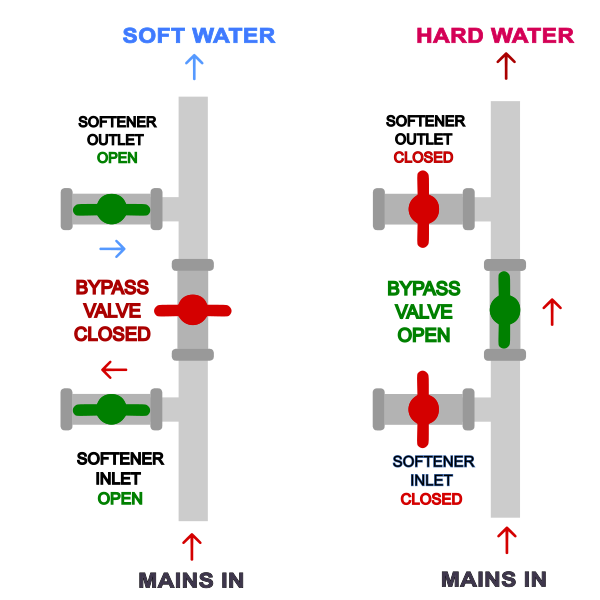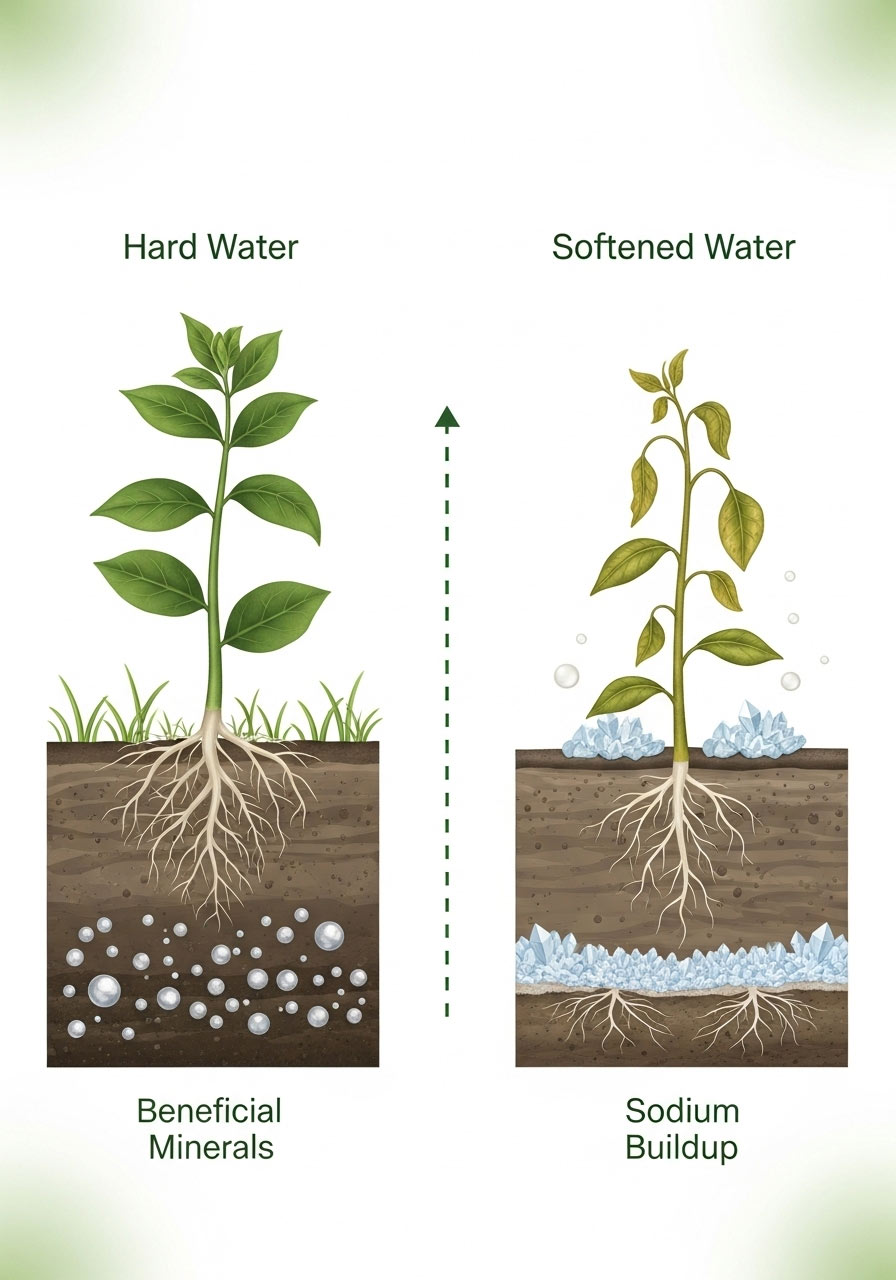Should You Bypass Your Water Softener? A Guide for Gardens & Drinking Water
When my water softener first kicked in, I was ecstatic. Soft water was everywhere! My first thought was, “Great, now my prize-winning tomatoes will grow even better!” How wrong I was. I nearly destroyed my entire vegetable garden. That experience taught me a crucial lesson: knowing how and when to use the water softener bypass is just as important as owning a softener, especially when it comes to your garden and drinking water.
First, What Is a Bypass Valve and How Do You Use It?
Before we dive into the “why,” let’s cover the “how.” Every system has a feature known as the water softener bypass. Your water softener, a key tool in fighting hard water, has a bypass valve which is like a detour for your water. It’s your control switch to decide whether water goes through the softener or around it. Knowing how to use it is a fundamental skill for any softener owner.

How to Use Your Bypass Valve in 30 Seconds
- Locate the Valve: Go to your water softener. The bypass valve is almost always located on the back of the main control valve, where the large inlet and outlet pipes connect.
- Identify the Handles: You’ll typically see one, two, or three handles. They are often color-coded (e.g., red and blue) or have arrows indicating the direction of water flow.
- Engage the Bypass:
- For a single-handle valve: Push the handle in or turn it to the “Bypass” position.
- For two-handle valves: Turn both handles 90 degrees so they are perpendicular to the pipes. This closes the loop to the softener and opens the bypass pipe.
That’s it! Your home now has hard water until you reverse the process. This is essential for watering the garden, filling a pool, or if your system needs service.
Case #1: Watering Your Garden, Lawn, and Outdoor Plants
The Verdict: Yes, You Absolutely MUST Bypass.
Why Softened Water Can Harm Your Plants and Soil
Using softened water (from a salt-based system) for your garden is a slow-motion disaster. Here’s the science behind why:
Problem #1: Sodium Buildup in Soil
As we know, an ion exchange softener works by swapping calcium and magnesium ions for sodium ions. While this is great for your pipes, it’s terrible for your soil. Over time, watering with sodium-rich water leads to a toxic buildup of salt in the soil. This can “burn” the roots of sensitive plants, prevent them from absorbing essential nutrients, and eventually lead to yellowing leaves, stunted growth, and death.
Problem #2: Soil Structure Collapse
Healthy soil has a loose, crumbly structure that allows water and air to reach the plant roots. Calcium and magnesium, the very minerals we fight indoors, are actually beneficial for soil structure, helping to bind clay particles together. When you replace them with sodium, it has the opposite effect. Sodium disperses clay particles, causing the soil to become compacted, dense, and unable to drain properly. Your soil essentially turns to concrete, suffocating the roots.

The Exception: Are Potassium-Based Systems Safe for Plants?
This is a common question. Instead of sodium chloride, you can use potassium chloride salt in your softener. Potassium is a key nutrient for plants, so it seems like a perfect solution, right? Not quite. While it is certainly *safer* and won’t cause the toxic sodium buildup, it’s not ideal. The high concentration of potassium can still throw off the delicate nutrient balance in your soil. Given that potassium chloride is 3-4 times more expensive than sodium chloride, it’s a very costly and unnecessary way to water your garden. The best and cheapest solution is always to use the bypass valve and give your plants the natural, untreated water they prefer.
Case #2: Drinking Softened Water
The Verdict: It’s Safe for Most People, But You Must Understand the Facts.
This is one of the most myth-filled topics in the water treatment world. Let’s separate fact from fiction.
Fact #1: The Amount of Added Sodium is Directly Related to Your Hardness
A water softener does not just dump a random amount of salt into your water. The amount of sodium added is chemically equivalent to the amount of hardness removed. The harder your water, the more sodium is added to soften it. The formula is simple: for every 1 GPG of hardness, about 7.5 milligrams of sodium are added to each liter of water.
(Your GPG) x 7.5 = mg of Sodium per Liter
When I tested my 17 GPG water, the calculation was: 17 GPG x 7.5 = 127.5 mg of sodium per liter. To put that in perspective, a standard slice of white bread contains about 150 mg of sodium. An 8-ounce glass of milk contains about 120 mg.
Fact #2: Who Should Be Cautious?
For the vast majority of healthy individuals, the amount of sodium in softened water is not a health concern and does not significantly contribute to their daily intake. However, there are two groups who should exercise caution:
- Individuals on a strict, physician-prescribed low-sodium diet: If your doctor has specifically instructed you to monitor every milligram of sodium for reasons like hypertension or kidney disease, you should consult with them.
- Preparing infant formula: Babies have underdeveloped kidneys, and it’s generally recommended to use purified, low-mineral water for preparing formula.
For these individuals, there is a perfect solution that works in harmony with a water softener.
The Ultimate Solution for Pristine Drinking Water: Reverse Osmosis (R.O.)
If you fall into one of the cautious groups, or if you simply want the purest, best-tasting drinking water possible, the answer is to install a Reverse Osmosis (R.O.) system under your kitchen sink. An R.O. system is the perfect partner to a water softener. The softener protects the delicate R.O. membrane from hard water scale, and the R.O. system then removes 95-99% of everything else from the water, including the sodium added by the softener, chlorine, heavy metals, and other contaminants. This gives you bottled-water quality right from a dedicated tap at your sink, while the rest of your house enjoys the benefits of fully softened water.
Using Your System With Confidence
You now know how to use your system with the wisdom of a seasoned pro. By understanding the water softener bypass, you can enjoy all the incredible benefits of soft water where you need it, while intelligently avoiding it where you don’t. You’ve protected your garden and have a clear, fact-based understanding of softened drinking water. You’ve protected your garden and have a clear, fact-based understanding of softened drinking water.
You are now a true master of your home’s water. Since you’re so comfortable with the details, you are more than ready for the final step: choosing a specific, reliable model that will serve your family for years to come.
